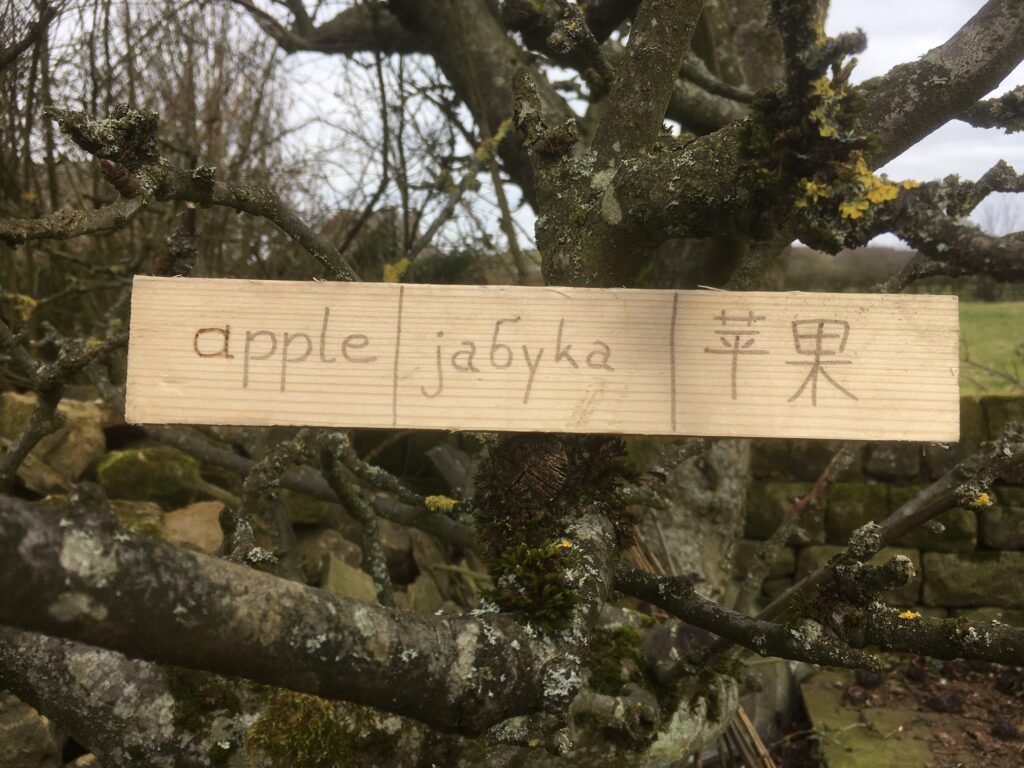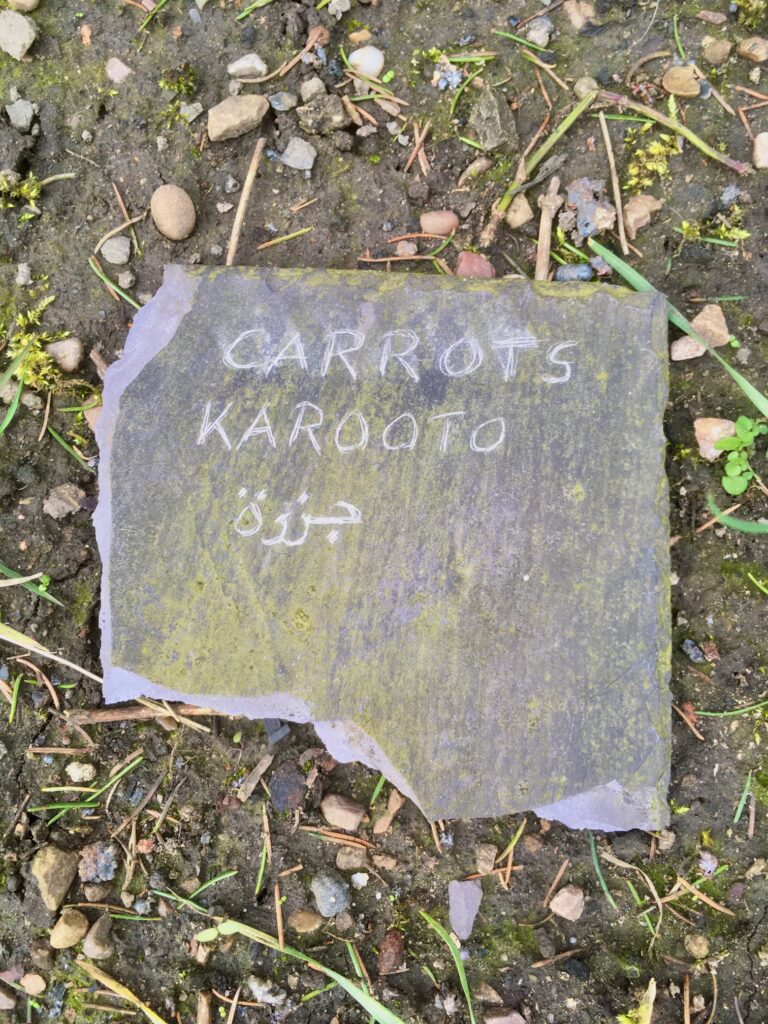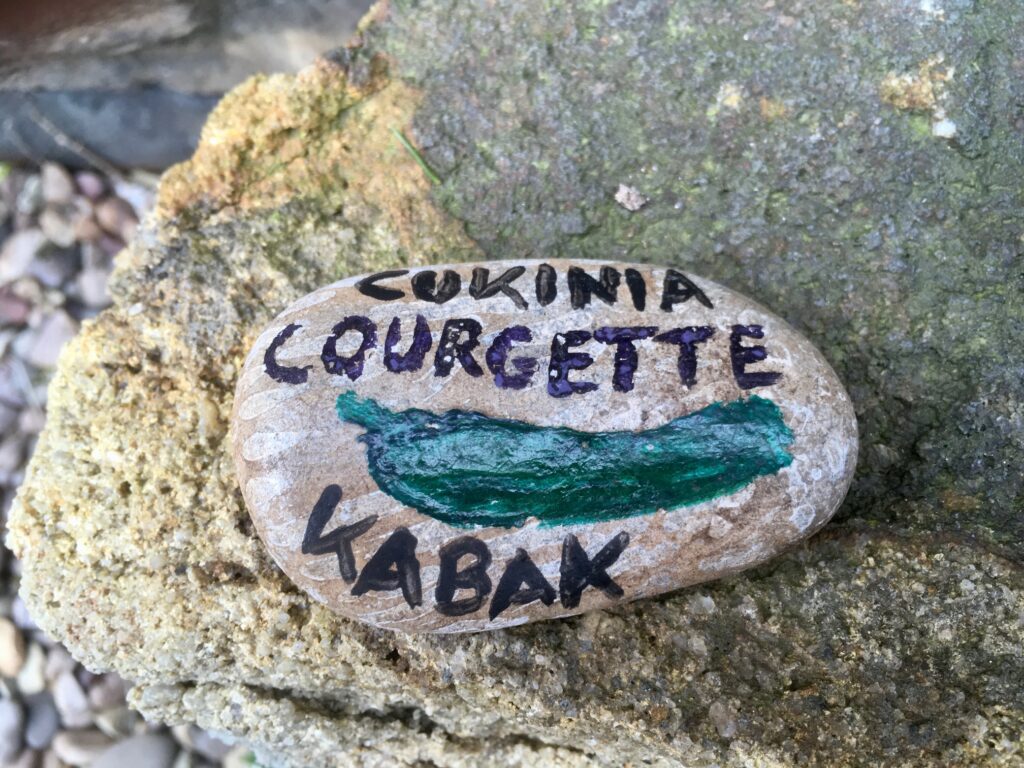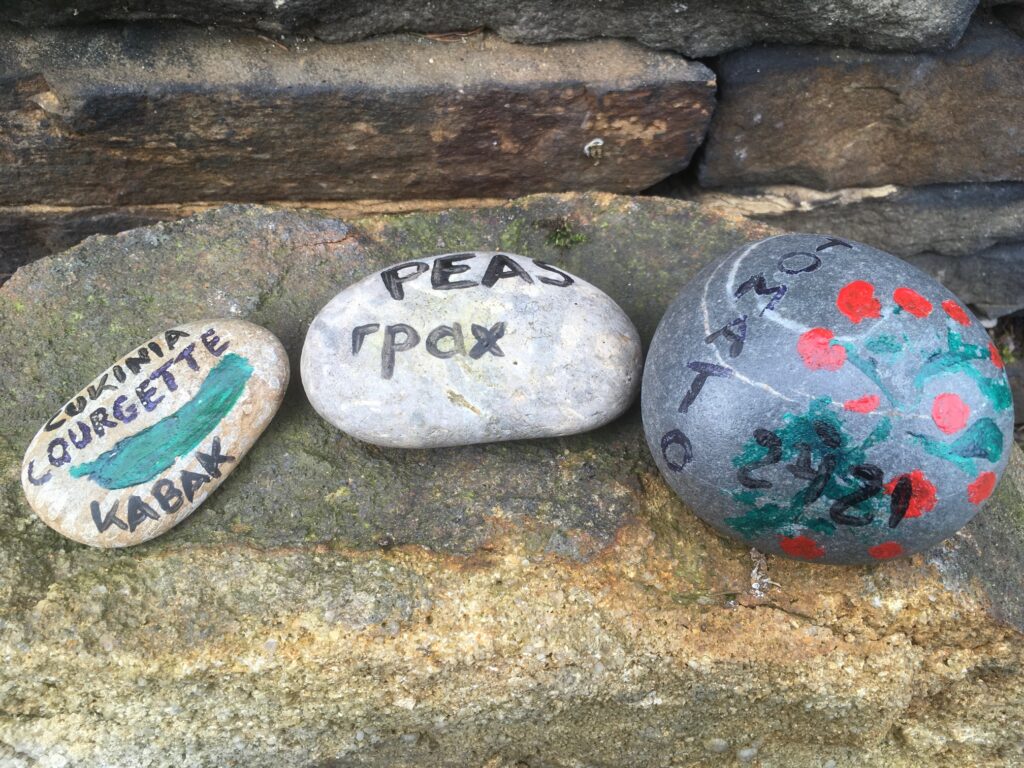The school garden is a prime space to make multilingualism visible, get children interested in nature, healthy eating, and conservation, and to bring creativity to the learning environment. The premise is simple – encourage children to help label the plants, drawing on their language skills. This activity is so straightforward that we have not included a lesson plan as such, but below are some ideas, suitable for different age ranges and materials, for creating suitable labels – please make your own judgment regarding suitability for the children in your care. We would love to see yours, to add them to the photo gallery below!
Recycled materials:
- Labels can be cut out of the plastic of milk cartons or plain white yoghurt pots, and can be simply labelled with permanent pens. An adult can help secure the label, to make sure it does not blow away, pollute school grounds, and makes the work disappear.
- Wood offcuts can be used as labels. Older pupils can nail pieces together in a T-shape, or drill holes to use string to hang labels from fences, etc. Pieces can be either labelled by pen, or, for older pupils, a pyrograph can be used for a more permanent solution (alternatively, an adult can go over children’s work with a pyrograph).
- Old roof slates can be written on in chalk and varnished, or scratched/scraped with metal (depending on dexterity/age, this could be a large screw, bolt or nail, or a fork, for example)
- Small terracotta flowerpots (or shards of large terracotta pots) can be painted and labelled with poster paints, and subsequently varnished for durability.
- A simple paper label can be drawn/painted and written, to fit inside a glass jar, which is turned upside down and mounted on a stick.
Natural materials (in addition to above)
- Pebbles/stones can be painted in the same way as terracotta pots, and, again, varnished.
- Found wood (e.g. driftwood) can be labelled and varnished
Other
- Paper labels can be laminated for durability.
- Lollipop sticks or clothes pegs can make simple labels for a single name/language to fit on. For larger labels, a wooden spoon would work.
- Adhesive aluminium tape can be wrapped around a handle like a flag, and scored/embossed with a strong pencil.
See the gallery below for some ideas.
(A quick note – because this activity has no lesson plan, we cannot track downloads etc., so please do let us know what you think, and share your results with us :))
Have you used this activity?
Let us know how it went by leaving some feedback.




